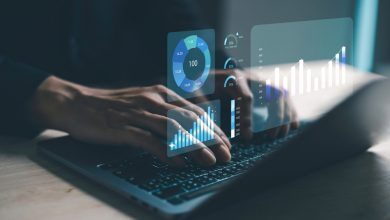Monitoring Remote Employees: Strategies for Productivity in 2025

It seems that fully remote and hybrid work schedules are the standard across the globe in 2025. This gives companies greater flexibility in attracting talented individuals from anywhere in the world. Though managing remote teams does have its challenges in maintaining productivity. The use of remote employee productivity tracking software is one of the solutions to the issues posed by remote work. Such systems, like Controlio software, help employers keep track of work without infringing on privacy and trust. In this article we will assist in understanding monitoring remote employees by providing strategies, software features, manners of ethics, and actionable steps to thrive in modern workplaces.
The Need for Remote Employee Monitoring
Remote work provides an unmatched level of flexibility and convenience for employees; however, it comes with its challenges for supervisors trying to monitor. It’s a lot more challenging to capture the level of engagement, advancement, or time spent that an employee puts forth into his or her responsibilities. Software monitoring remote employees helps resolve this dilemma by capturing data on working hours, tasks being done, application usage, and productivity levels. Remote employee monitoring tools like the Controlio software allow companies to have visibility into the workflows of their employees while enabling the workers to put forth their best performance. With proper implementation of these systems, monitoring will not feel like an infringement of privacy, and a level of trust and responsibility can be achieved.
Definition Of Monitoring Remote Employees
Balanced oversight using advanced monitoring tools results in remote employees functioning at an elevated level. Defined advantages include:
- Remote Employee Monitoring Software Improve Productivity
Remote employee monitoring helps employees improve focus as distractions are taken away. Non-work browsing and other unnecessary activities receive the attention they need. - Improved Responsibility Remote Employee Monitoring Software
Remote employees receive performance alerts, which keep distractions at bay. Deadlines and set business goals are more likely to be met. - Effective Use Of Time and Resources Remote Employee Monitoring Software
The way time and tools are spent gives managers important insights into how burden is distributed. This leads to better resource allocation. - Remote Team Engagement In Real Time Remote Employee Monitoring Software
Rotating employees is practical to foster engagement for remote employees. It strengthens uniformity among teams, and automated systems provide needed stimulants. - Remote Employee Monitoring Software Requires Data Policies
Statistics help improve processes and evaluate employees, giving them targets for the next assessment.
In 2025, monitoring software is bound to become very important for many businesses, including those managing remote teams, due to the advantages it brings.
Remote Employee Monitoring Software Features
Strong systems are both functional and visually appealing and aid in boosting remote work output. Important features that should also be focused on include:
- Activities Tracking
Provides reports on time and streams per task that aid in optimizing and strategizing projects as well as planning workloads more accurately. - Access and Role Based Settings
Set user permissions depending on job roles to promote privacy and confidentiality. - Planned Monitoring
Provides the option to set up monitoring intervals to ease the workload and improve schedule structure. - Flexible Scheduling
Enforces uniformity to baseline work hours without eliminating flexibility of schedule for employees. - Affiliate Programs
Monetize encouraging users, which provides businesses with the ability to easily expand.
These services help manage remote work scheduling and monitoring, as seen from the Controlio app examples, and provide employers with everything they require from their employees.
How to Optimize Remote Monitoring
Remotely managing processes in the modern workplace encourages businesses to adopt new mixed monitoring tools to help manage employee performance. Effective strategies are:
- Use Planning with Monitoring
Establish milestones to be monitored to ease block or endpoint task monitoring to vary focus. Define roles for employees and create defined responsibilities and set deadlines. - Merge Quantitative and Qualitative Evaluation
Include monitoring data with peer evaluations to gain multiple perspectives and create constructive productivity feedback. - Foster Employee Development
Be proactive by providing assistance or guidance to employees who are efficient but struggle with time management.
These strategies guarantee monitoring improves productivity without being overly strict.
Remote Oversight: Ethical Considerations
Trust or legal implication concerns make ethical execution important. Companies need to:
- Explain The Scope of Monitoring
Explain monitoring activities with an emphasis on productivity and support orientation. - Respect Boundaries of Privacy
Monitoring must be restricted to work-related activities, and data protection instruments such as GDPR or CCPA must be met. - Implement access controls and Encryption
Such methods protect monitoring data. - Involve Employees
Employees should be active participants in implementation by addressing concerns and feedback.
As the Controlio software suggested, ethical bounds build trust and encourage productivity.
Primary Source
- Entrepreneur—Corporate Surveillance: 78% of Employers Are Using Remote Work Tools to Spy On You
Case Study: An Example OfA Software Startup Implementing Remote Monitoring
The example of a small software startup highlights the consequences of remote employee monitoring. To address delays in product updates due to remote work, the startup incorporated a surveillance solution like the Controlio app. Starting with clear objectives, the software revealed the developers were spending excessive time on manual testing. The company adopted automated testing tools, which reduced update cycles by 25%. The system also identified underused collaboration tools and trained employees on Jira and Slack. After three months, accelerated product releases, improved employee morale, and enhanced workflows were realized. The changes show the benefits of ethical monitoring on remote productivity.
Best Strategy Practices for Remote Employee Monitoring
For effective implementation of monitoring software in an organization, a business should:
- Communicate the monitoring objectives and outline processes transparently.
- Ensure proper supervision of monitoring tools, data analysis, and providing useful actionable information to be derived from the data collected.
- Dedicate time to assess the monitoring practices to verify the business goals set are still relevant.
- Serve the employees and use the monitoring data for their support rather than as a form of punishment.
The suggestions above are likely to promote operational changes that substantially improve a business’s work environment while improving productivity at work.
Conclusion
In 2025, remote employees will be monitored through tools such as the Controlio app. It assists in improving productivity and managing tasks for remote employees alongside supporting distributed teams. With the enhancement of features, trustful work environments can be developed by optimizing workflows using advanced practices controls. Trust is essential in implementing Controlio and similar apps with transparent policies. Fostering a productive environment while remote work evolves to further dominate the markets will achieve organizational success in comparison to competitors. Striving for boundless achievement is crucial when tapping into new markets, establishing remote-work-friendly policies, and enacting transparent monitoring systems.



